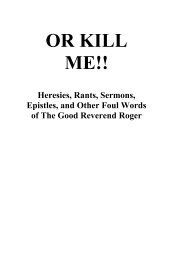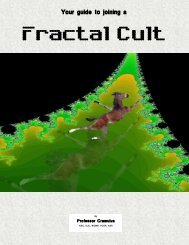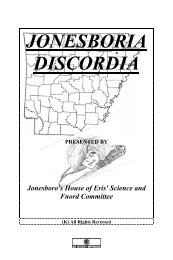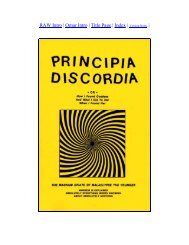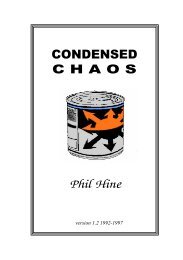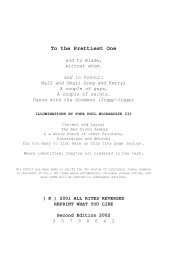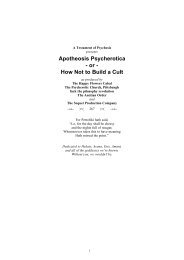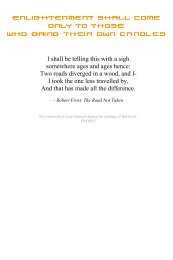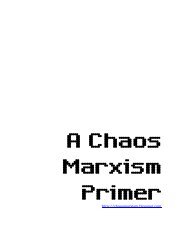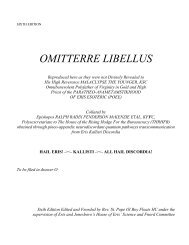Coincidance - Principia Discordia
Coincidance - Principia Discordia
Coincidance - Principia Discordia
Create successful ePaper yourself
Turn your PDF publications into a flip-book with our unique Google optimized e-Paper software.
162 COINCIDANCE<br />
appears as a "Grant, old gardner" in one part of FW—blending with Adam<br />
whom Tennyson called "the grand old gardner"—and whose name is also<br />
cunningly hidden in "grand uproar style" {emphasis added) and several other<br />
Joycean arabesques you might enjoy discovering for yourself. The Blue and<br />
the Grey of the Civil War also appear frequently, but ultimately appear part<br />
of the Glues and the Gravys—two odd family names Joyce noted in the<br />
graveyard at Sidlesham where he found the Earwicker tombstone.<br />
If Abhe life is identified with Eve in the opening clause of FW ("riverrun,<br />
past Eve and Adam's...") this is also fortunate, since Eve in Hebrew means<br />
life (as Adam means earth.)<br />
The "Anna" got into "Anna Liffey" because the English did not<br />
understand the Gaelic abhe (pronounced more like awa) but is quite<br />
appropriate for Joyce's purposes. Anna, in the New Testament, was the<br />
grandmother of Jesus and thus, in Catholic theology, the grandmother of<br />
God, which makes her a good symbol of that which is most ancient and<br />
primordial. The Tuatha de Danaan, early inhabitants of Ireland, worshipped<br />
a goddess named Danu, seemingly cognate with Diane-Artemis (the bear<br />
goddess who was a bare goddess) and also with the ancient Near Eastern<br />
goddess Anu and the Egyptian Nuit. Considering these and other etymologies,<br />
Robert Graves in The White Goddess concluded that "Anna" is the best of all<br />
alternative names for the ancient Moon Goddess, who combines virgin,<br />
mother and crone.<br />
The "Anna" root also appears in the Russian, Anastasia, which means<br />
"resurrection" and fits perfectly into the symbolism of FW. As usual, when<br />
you look for synchronicity, synchronicity looks for you. While Joyce was<br />
writing FW in Paris a woman surfaced there who claimed to be the lost<br />
Grand Duchess Anastasia. She appears on page 28 Gaelicized as Anna<br />
Stacey, but then Anna Liffey becomes Judaized on page 253 as Hannah<br />
Levy. Each of Joyce's "characters" is a local example of a non-local function,<br />
as all women are aspects of the non-local<br />
A and B in Norse, meanwhile, are Ask and Embla, which mean Ash and<br />
Elm and are also the names of the Adam and Eve of Norse mythology. They<br />
appear on FW page 4 in the lovely Freudian/Jungian cluster,<br />
elms leap where askes lay. Phall if you hut will, rise you must (emphasis added)<br />
Although Joyce has given it a detumescense/retumescense reference, the<br />
second line echoes McPherson's Fingal, a Scots version of the Finn MacCool<br />
epic: "If I must fall, my tomb shall rise."<br />
ABC or Hebrew Aleph-beth-gimmel recurs constantly in FW, usually<br />
symbolizing the "three quarks" of page 383 (<br />
) who later got<br />
incorporated into quantum mechanics by Nobel laureate Dr. Murray Gell-<br />
Mann. "Alfred, Bertie, Charlie" and similar disguises usually conceal these



